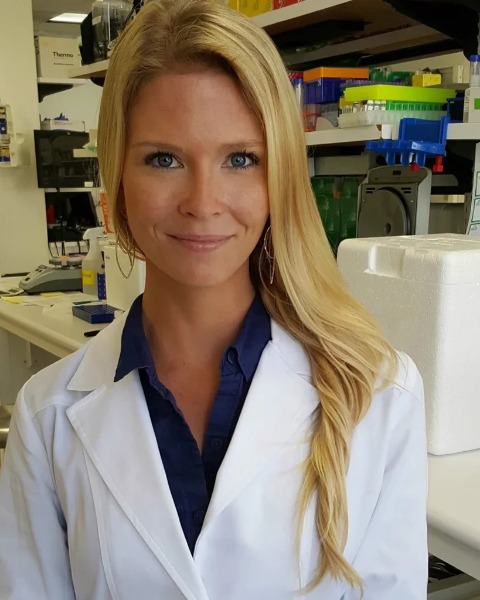Small Animal Internal Medicine
In Person Only
R03 - Unraveling Canine Infectious Respiratory Disease: Nasal Microbiome Differences in Healthy vs. Symptomatic Dogs
Wednesday, June 18, 2025
4:15 PM - 4:30 PM ET
Location: KICC L005
CE: 0.25 Medical

Janina Krumbeck, PhD (she/her/hers)
CEO and Co-Founder
MiDOG Animal Diagnostics
Tustin, California, United States
Research Abstract - Oral Presenter(s)
Abstract:
Background: The canine infectious respiratory disease complex (CIRDC) is highly contagious and challenging to treat. Initially linked to bacteria like Mycoplasma, Bordetella, and Streptococcus in the lung microbiome, limited research has explored the nasal microbiome. PCR studies identified Mycoplasma canis and Mycoplasma cynos as more abundant in in the nasal microbiome of dogs with CIRDC. However, no studies have examined bacterial pathogens at the species level or bacterial-fungal interactions related to CIRDC using NGS. Hypothesis/
Objectives: Using NGS, we analyzed the nasal bacterial and fungal microbiome in healthy and CIRDC-affected dogs to identify contributing microbes and explore bacterial-fungal interactions influencing CIRDC. Animals: Dogs from veterinary clinics, either healthy (n=63) or CIRDC-affected (n=119).
Methods: The nasal microbiome of each dog was examined with NGS. Linear discriminant analysis effect size (LeFSE) compared bacterial and fungal genera and species, while co-occurrence analysis identified significant microbial interactions between bacterial and fungal species (>1% relative abundance and >25% frequency) in the CIRDC-affected dogs.
Results: Healthy dogs had higher levels of (f) Moracellaceae sp., Streptococcus canis, and (o) Pseudomonadales sp., while CIRDC-affected dogs had more Staphylococcus, Pasteurella canis, and Mycoplasma cynos. Fungal microbiome analysis showed healthy dogs had more Aureobasidium sp. and Botrytis, whereas CIRDC-affected dogs had more Dothideomycetes, Curvularia, and Hypocreales spp. Co-occurrence analysis revealed positive interactions between bacterial and fungal species (e.g., Peptostreptococcus canis and Malassezia restrica) and negative ones (e.g., Conchiformibius steedae and Aspergillus sp.). Conclusion and Clinical Importance: These findings provide insights for veterinary professionals to improve CIRDC diagnosis and treatment in dogs.
Background: The canine infectious respiratory disease complex (CIRDC) is highly contagious and challenging to treat. Initially linked to bacteria like Mycoplasma, Bordetella, and Streptococcus in the lung microbiome, limited research has explored the nasal microbiome. PCR studies identified Mycoplasma canis and Mycoplasma cynos as more abundant in in the nasal microbiome of dogs with CIRDC. However, no studies have examined bacterial pathogens at the species level or bacterial-fungal interactions related to CIRDC using NGS. Hypothesis/
Objectives: Using NGS, we analyzed the nasal bacterial and fungal microbiome in healthy and CIRDC-affected dogs to identify contributing microbes and explore bacterial-fungal interactions influencing CIRDC. Animals: Dogs from veterinary clinics, either healthy (n=63) or CIRDC-affected (n=119).
Methods: The nasal microbiome of each dog was examined with NGS. Linear discriminant analysis effect size (LeFSE) compared bacterial and fungal genera and species, while co-occurrence analysis identified significant microbial interactions between bacterial and fungal species (>1% relative abundance and >25% frequency) in the CIRDC-affected dogs.
Results: Healthy dogs had higher levels of (f) Moracellaceae sp., Streptococcus canis, and (o) Pseudomonadales sp., while CIRDC-affected dogs had more Staphylococcus, Pasteurella canis, and Mycoplasma cynos. Fungal microbiome analysis showed healthy dogs had more Aureobasidium sp. and Botrytis, whereas CIRDC-affected dogs had more Dothideomycetes, Curvularia, and Hypocreales spp. Co-occurrence analysis revealed positive interactions between bacterial and fungal species (e.g., Peptostreptococcus canis and Malassezia restrica) and negative ones (e.g., Conchiformibius steedae and Aspergillus sp.). Conclusion and Clinical Importance: These findings provide insights for veterinary professionals to improve CIRDC diagnosis and treatment in dogs.


